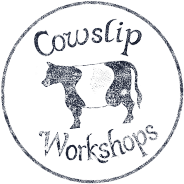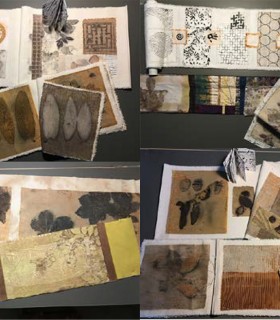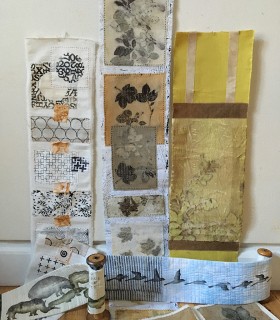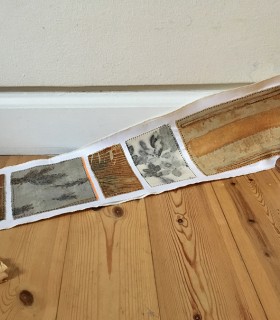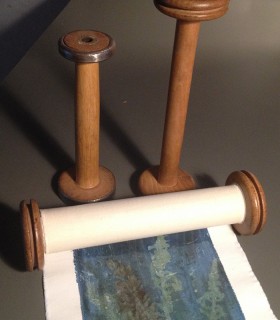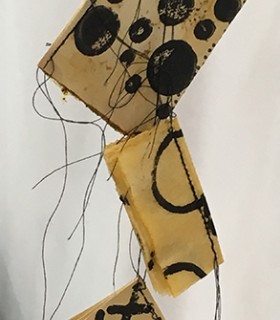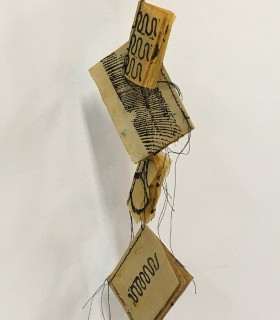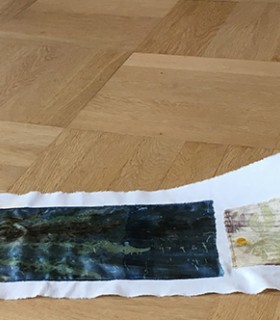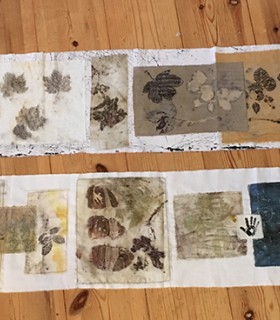Collages in different formats, surface design, hand and machine embroidery & more
Books, rolls, and scrolls has always been used for keeping information or things of beauty or for purely decorative use as objects in them selves. They can also hold collages in unusual formats or keep series of collages together as a single work. Experiment with your favourite techniques – or some new ones – in a different format from the normal wallhaning. If nothing else some of the projects lends themselves brilliantly to creating exiting new ways of keeping your samples together – like a contemporary sampler.
You will be encouraged to experiment with different materials and combinations of techniques and explore a variety of simple yet effective surface design techniques through exersizes and samples and you are free to choose wether you want to work on a book, a roll, a scroll or maybe a box – or several different projects at the same time.
Student Requirements
- inspirational material; such as sketchbooks, photos, images, books, found objects and so forth. Inspirational material can also include fabrics with special textures, bres or paper that you would like to try out.
- miscellaneous tools; masking tape, scissors, rotary cutter, ruler, cutting mat, if you are used to working with
that, needles, pins, 505 spray, glue for paperwork if you prefer to work with paper.
- fabrics and other materials: Fabric that you would like to work with - not necessarily big pieces, but make sure you have a good selection. White or light fabric is good for many surface design techniques and if you have hand dyed or for instance rust or eco-dyed fabric bring that too. Scraps and smaller pieces are invaluable for collage techniques; sheer fabrics as scrim, gauze, organza (I often use very thin white silk organza) or similar. Bringing too much is better than bringing too little – choice is important! Special papers ranging from tea bag paper to heavier and maybe textured paper – anything that appeals to you can be an option.
Your may need some bigger pieces of heavier fabric if you want to make textile books or rolls – or big sheets of paper, but it is dif cult to say how much.
- thread; suitable for hand and machine stitch and embroidery,
- batting; thin cotton or polyester batting if you want to make quilted rolls for hanging on the wall.
- backing fabric; enough for at least 2 or 3 times 50 x 80 m
- sewing machine; including darning or embroidery foot if you wish to machine quilt or work with machine embroidery. The sewing machine manual, if you are not confident with your sewing machine. Extension cord.
- American freezer paper, acrylic sheet or A4 plastic pockets; if you wish to try stencilling or mono printing
- fabric paints or inks, Markal/Shiva Paintstiks; a small selection of colours that complement the fabrics and mark-making tools; a small selection such as a couple of brushes, rollers etc., plastic to cover up work space, apron to protect your clothes - I will bring a selection of paintstiks to complement the selection too.
- stamps, stencils, things with interesting textures for stamping or rubbing - anything you would like to use or to try out. Heavy cardboard pieces, string and/or rope, craft foam, double sided carpet tape if you want to
-
make your own stamps
- apron and paper towels; or old rags to clean tools and workspace
- water soluble stabilizer; if you want to experiment with machine embroidery on organza
-
PAT Testing: Make sure your electrical equipment (sewing machine) has been recently PAT tested.
